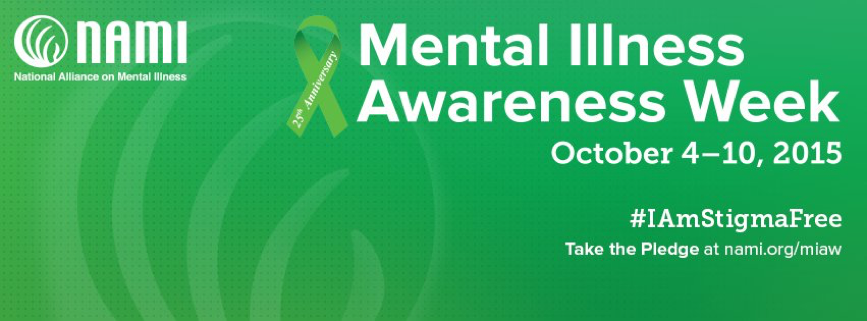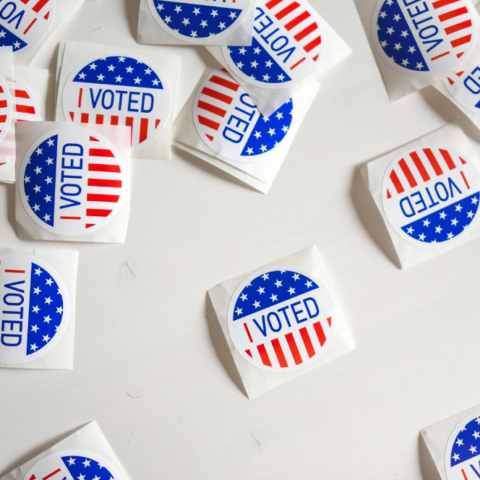The Active Minds suicide prevention exhibit shown above travels to campuses across the country. This exhibit features 1,100 backpacks representing the number of college students lost to suicide every year.
By Melissa Florkowski
One in five American adults suffer from mental health issues such as depression, anxiety and addiction. These numbers are far beyond the point of dismissal: everyone knows five people, and just because our peers may not discuss these issues doesn’t mean that they aren’t widely prevalent.
Despite these statistics, mental health has long come second in perceived and implemented importance to physical health. Mental health as a whole was not even technically referenced as a health discipline until 1946. As they are often less visibly pressing than physical health issues, mental health issues are sometimes brushed off as “all in our heads” or “just a bad day.” This denial of mental health as a serious issue only makes matters worse as people fail to seek care, allowing their conditions to worsen.
Slowly but surely, however, this has been changing. In 2008, the Wellstone and Domenici Mental Health Parity and Addiction Equity Act (MHPAEA) was enacted, requiring group health plans and health insurance issuers to treat financial requirements and treatment limitations for mental health and substance use disorders the same as all medical and surgical treatment. This legislation has seen some success in increasing mental health and substance abuse patient admissions, but effects still remain somewhat unclear. Much confusion over scope of services covered and enforcement of legislation have been reported by insurance providers and employers.
While the MHPAEA is a large step in the right direction toward accessibility of treatment for mental illness, other factors form obstacles in Americans’ path to seeking treatment. The stigma surrounding mental illness still prevents many people from seeking care at all. People suffering from mental illness often consider their issues too minimal to seek care, or may not even recognize the harmful effects these conditions have on their health and quality of life. The embarrassment and shame, both personal and public, surrounding becoming a “mental health patient” often deters people from talking about their issues. This wholly unnecessary stigma leads to detrimental effects. In 2013, approximately 60 percent of adults with mental illnesses did not receive mental health services.
But this stigma is slowly beginning to dissolve. In 1990, the U.S. Congress established the first week of every October as Mental Illness Awareness Week in coordination with the National Alliance on Mental Illness. This week of recognition, which focuses on fighting stigma, offering support, educating the public and advocating for equal care, has been gaining ground across the country in recent years. Social media has been especially significant in helping the cause. This year, Mental Illness Awareness week featured the official hashtag #IAmStigmaFree, as well as official images for Facebook cover photos and Twitter headers.
With such strong recent focus on improving access to care and reducing stigma, these efforts must strive to make a difference where they are needed most: college campuses. One in four young adults ages 18-24 has a diagnosable mental illness. Suicide is the second leading cause of death on college campuses, and about 7 percent of college students “seriously considered suicide” in 2012. 30 percent of college students reported being depressed in 2014.
These rates have been directly linked to the stress of overwhelming student debt and the pressure to perform well. In addition, the rise of social media has contributed to students’ anxiety of missing out on a manufactured idea of the perfect college experience. This overwhelming combination of pressures often causes students to both unreasonable expectations for themselves and unrealistic interpretations of other students’ lives. It’s no wonder the mental health of college students is at an all-time low.
Beyond this poor environment for mental health, however, lies hope for improvement. These unsettling statistics have not gone unnoticed by activists and student organizations. In early September, UGA prefaced NAMI’s awareness week by hosting its first student-organized Mental Health Awareness Week. Student organizations including Active Minds, To Write Love On Her Arms, the Student Government Association and Psi Chi (the National Honor Society in Psychology), teamed up to host events including a panel discussion, a fundraising night, de-stressing with puppies, and an open mic night. These events were aimed at opening the conversation about mental health and reducing stigmas surrounding mental illness, thus encouraging students to seek support and care on UGA’s campus. Active Minds, a student organization at UGA since 2010, prides itself on “working to utilize the student voice to change the conversation about mental health on college campuses” and encouraging students to seek help as soon as they need it.
And many students do. The University Health Center provides Counseling and Psychiatric Services (CAPS) to students at a “reduced cost after paying student health fee,” which is typically $25 per session. They refer students to outside resources if necessary, and also provide lower-fee counseling services at $10 per session with graduate clinicians in training at the Center for Counseling and Personal Evaluation.
This means that once students manage to overcome a strong stigma, they then must decide if their illness is worth paying to speak to someone about.
So how does UGA measure up with availability of low-cost services? Not too well, but unfortunately not too out of the ordinary. Several other colleges in Georgia, such as Georgia Tech, the University of West Georgia and Georgia Gwinnett College, offer free counseling services to all students.
Yet many other colleges across the country do struggle to provide accessible care to all students. Briana Mullen, senator of Associated Students of the University of California, speaks of the failures of many colleges to provide affordable mental health resources. “Access to mental health resources are the first thing that really go when faced with budget cuts,” she says. “I’ve had administrators tell me that mental health is not their problem, that it’s too personal.”
As student organizations and advocacy groups work hard to raise awareness, the continuing decline of stigma surrounding mental illness seems likely. This advocacy for care combined with an all-time low state of mental health for college students means that the number of students seeking care is on the rise. But many colleges are unprepared for this increase in need for care: many university budgets for mental health care are staying the same or even decreasing. University counseling centers often have long waiting lists and inflexible hours, making quick access to mental health care difficult to find.
The progress that has been made in expanding coverage for mental health care is undeniable, but a change in policy does not mean a permanent solution. The powerful stigma surrounding seeking care has also been dramatically reduced, and these efforts must be matched by adaptations in accessibility to care. These advancements help create hope for decreasing staggering statistics and stories of mental illness and suicide. These efforts must be kept up, especially on college campuses, if we hope to truly begin to resolve this issue.
Photo: Active Minds



